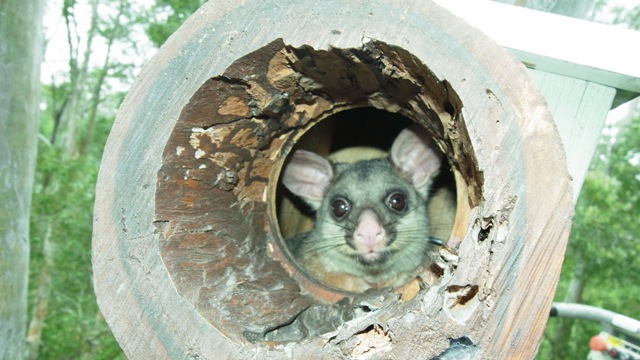Animals can use poles, substations, pits, buildings and other structures for nesting. We work with local wildlife organisations to relocate and rescue animals sometimes injured or impacted by our electricity network. We also donate expired but still useful first aid items and uniforms to local wildlife rescue organisations in our network area.
Previously, more than 220 nest boxes were installed along easements on the Central Coast and Hunter Valley to provide homes for native wildlife. This was done to offset the loss of some hollow-log bearing trees due to new and upgraded powerlines.
In addition to nest boxes the rehabilitation program included weed removal, native seed collection and propagation.
Access tracks created for construction vehicles have also been rehabilitated with improved drainage to ensure future viability and to guard against runoff into creeks and tributaries in the area.
Our last audit of the Hunter Valley site showed more than 90 percent of the nest boxes were now homes to Feathertail Gliders, Pygmy Possums, Brushtail Possums, Emerald Spotted Tree Frogs, galahs and parrots.
Environmental controls for protecting and caring for native wildlife are specified in Ausgrid’s NS 174C Environmental Handbook for Construction and Maintenance.
If you spot native wildlife injured on the electricity network, contact our Emergency Services on 13 13 88.

